Optics have been around for centuries. But binoculars, in particular, have evolved into technological marvels that can be used in various situations, enhancing vision.
Of course, with innovation comes choices—and there are many. What types of binoculars are out there, and which one is best for you?
Our detailed guide is here to help! Learn about the different models, uses, and advantages of each. Let’s peer into the looking glass!
What Are the Uses of Binoculars and Why Do We Need Them?
The objective of binoculars is simple—they enable us to see faraway images better or, with some types, clearer images in darkness.
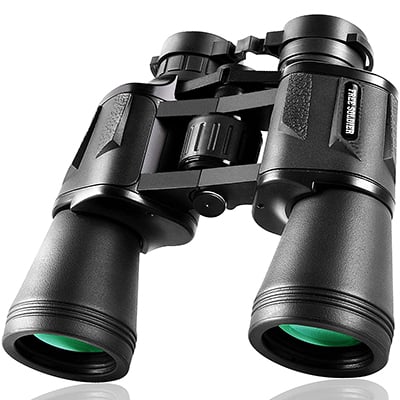
Binoculars consist of special lenses—one for each eye and mounted on a frame. A dial on the binoculars can be used to adjust the focus for a clearer view, making it more natural to enjoy enhanced images with both eyes as opposed to using a single-eye telescope.
Within each telescope of the binoculars is a pair of reflecting prisms. As the light passes through the objective lens and bends, the prism acts like a mirror that rotates the image, so it is shown correctly to the viewer through the eye lens.
And voila, you have binoculars—a tool that comes in handy for all sorts of outdoor activities. But while the concept is simple, other features make one type of binocular better than another, depending on what you want to use it for.
For example, if you’re going into a wet environment, you’ll want to consider how waterproof the binoculars are. Or, if you’re hiking, the lighter and more compact the binoculars, the easier they’ll be for you to carry.
There are also different types of magnifications to consider for the same reasons. Higher magnifications may not render the best quality for hiking, but it’s perfect for steadying enlarged images from long distances.
Let’s take a look at some popular uses for binoculars and the features that render the best viewing results.
Bird Watching
If you’re viewing birds, a few characteristics jump out. You’re most likely outside, on a trail, and the birds fly about. They’re small and fast-moving, which means that you need binoculars that are rugged for outdoor use and built to capture clear moving images.
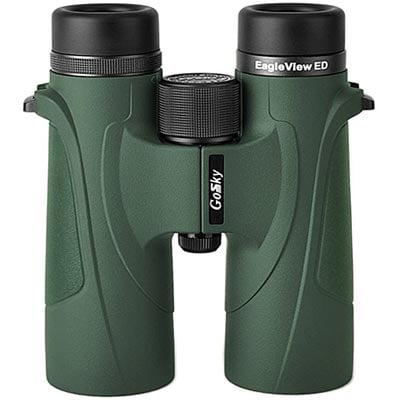
Look for binoculars that are lightweight and compact, so you can quickly whip them out of your pocket when that rare feathered friend flutters by.
A magnification of 8x is fine for bird watching, considering the wider field of view that is ideal for spotting small, fast-moving objects. A higher objective number works well in low light if you plan to go out into the field at night.
Water Activities
If you’re an avid paddler or have a whale watching trip planned in the future, a stable image is a necessity if you’ll be tossing from side to side due to waves. For this, a 7x magnification should suffice.
Of course, a waterproof model comes in handy here. And it doesn’t hurt to consider other accessories, such as a floatable strap—in case your binoculars fall overboard.
Sporting Events/Concerts

It doesn’t matter what concert seats you have if you’ve got quality binoculars to zoom in on your favorite singer’s face or athlete—if you’re at a sporting event.
Compact and light are best, so you can fit them in your purse or backpack without having to lug around any bulky equipment. Here are the recommended magnifications for concerts and sporting events:
Travel/Wildlife Viewing
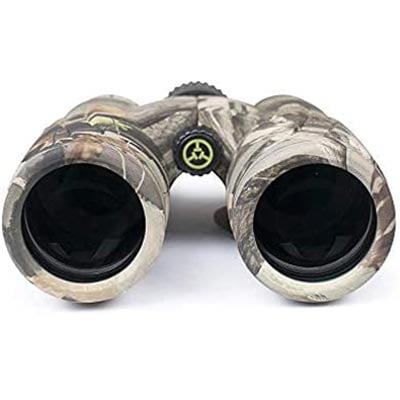
It’s safe to assume that while on a safari, the animals you’ll be viewing are far away; hence, the reason why a magnification of 8x or 10x is suitable.
Consider if you’ll be walking or riding in a car, as this determines how compact you want your equipment to be for fast handling.
Finally, research the weather conditions where you’ll be traveling. Is it humid or rainy? Is it dry or dusty? If so, opt for dust or waterproof binoculars.
Hunting
This is one activity where binoculars are common. You need to be able to see tiny details from far away; hence, a 10x magnification or higher is best.
If you hunt at night, an objective of 15 or higher enables you to see clearly in the darkness.
By now, you know what else to look for when choosing your hunting binoculars. Are you moving around frequently? If so, then stick to a lightweight model. Is there a chance of rain? Waterproof or fog proof are both essential for optimal performance.
7 Binocular Types Explained
Now that we’ve gone over some of the most popular uses of binoculars, it’s time to zero in on the different types of binoculars.
To start, there are two main styles to be familiar with: roof prism and Porro prism. These represent the different designs that offer varying benefits when out in the field.
Let’s break them down one by one!
1. Roof Prism Binoculars
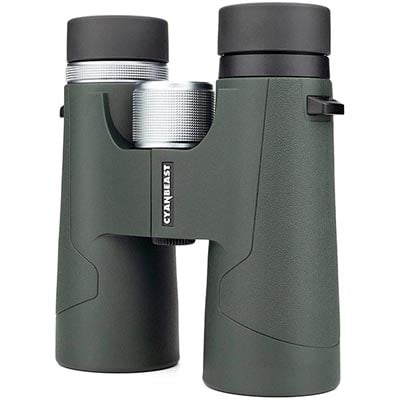
The best starting point is understanding what the roof prism binoculars design entails. This is the more modern style compared to the traditional Porro style.
Notable features include a lightweight, straight-tube construction that is compact for easier handling.
They look simplistic, but the mechanics are complex. Light enters the objective lenses and is bounced throughout a convoluted pathway before reaching the ocular lenses. This complicated setup produces brighter images with a higher magnification.
The pros of roof prism binoculars are that they’re compact, and the quality of the images is excellent. The con is that they are difficult to manufacture and, therefore, more expensive than other styles.
Roof prism binoculars are best used for:
2. Porro Prism Binoculars
Porro prism binoculars are the originals, dating back to the 19th century when Ignazio Porro produced the first modern setup that is still in use today.
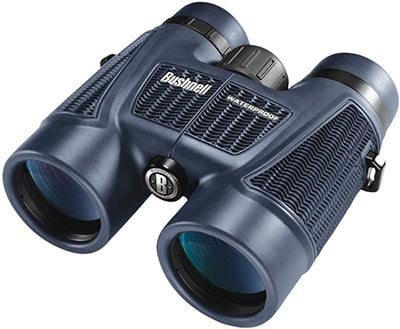
The Porro prism design is simpler than roof prisms, sending light from the objective lenses through interdependent triangle-shaped light-catchers that send the light in a zigzag, amplifying and inverting the light for a sharper image.
It’s less complex to manufacture, and it works well, providing a quality field of view and three-dimensional image compared to roof prisms.
However, Porro prism binoculars tend to be bulkier and less convenient for activities such as hiking or paddling.
Porro prism binoculars are best used for:
3. Monoculars
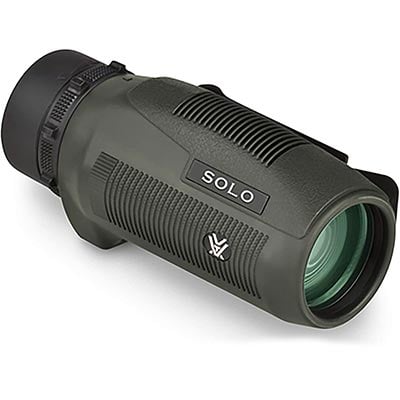
As the name implies, this type of design features a single eyepiece and lens. You only get to view images with one eye, so it’s perfect if you’re looking for an ultra-compact general use viewing tool that also fulfills your pirate fantasy.
While it’s certainly convenient to carry around, monoculars provide a less quality image than binoculars due to less depth. They’re more suited for short-term scanning.
Monoculars are best used for:
4. Astronomy Binoculars

If you’re into stargazing and a telescope takes too much finagling, then the good news is that there are binoculars designed to deliver quality results for this activity.
For example, if a meteor shower is exploding in the sky, then it can be difficult to pinpoint the rapid movements of meteors with a telescope. However, this is something binoculars can handle.
Larger binoculars give the user a larger field of view, but they’re cumbersome and expensive. There are smaller binoculars that provide a clear view at the spur of a moment, and you can also invest in a tripod if you want to enhance the steadiness of the image.
Astronomy binoculars are best used for:
5. Night Vision Binoculars
Do you need to see better in the dark for hunting or camping? If so, night vision binoculars are the top choice but note that they’re only good for darkness and not general use.
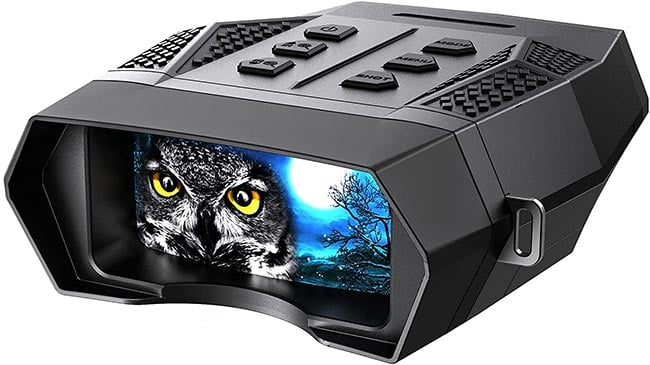
These optics utilize photon-enhancing electronics to amplify the little amount of light available and produce distinguishable images that make it easier to navigate safely in the dark.
Night vision binoculars are best used for:
6. Opera Binoculars
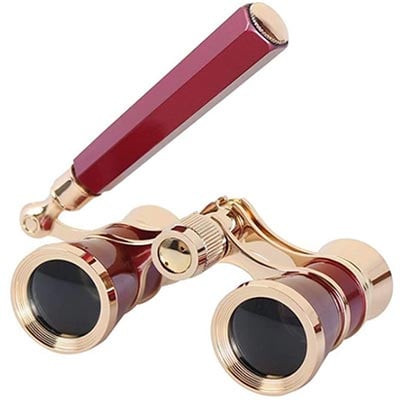
These binoculars have been around for centuries as a common fixture in theater and opera houses.
They’re not high tech, and the magnification is low—around 4x. However, for theater, you typically don’t need a fancy setup. These stylish little binoculars allow you to zoom in on the actors’ faces, catching all the feels no matter how far away you’re sitting.
Opera binoculars are best used for:
7. Marine Binoculars
To round out our guide on types of binoculars and uses, this is your water world model to be used—as you can guess—around the water.
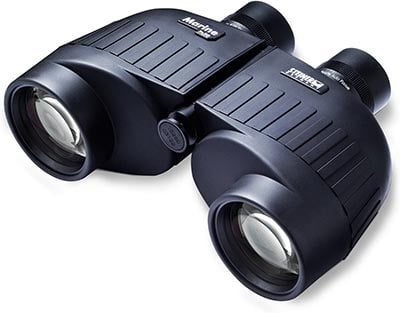
These binoculars come equipped with wider ocular and objective lenses that produce low to moderate magnification.
This is ideal for use on the high seas if you’re exploring, fishing, or whale watching because you get a larger field of view without the shaky image that’s typical with high magnification.
Most marine binoculars are also fog proof and waterproof, which is essential on a rocking boat with splashing waves.
Marine binoculars are best used for:
Types of Binoculars Conclusion
There are many types of binoculars and uses, so it’s normal to feel overwhelmed regarding what suits your lifestyle the best. It’s helpful to ask yourself what you plan to do and what the environmental factors are where you’ll be using binoculars.
Whether you’re around water, in a forest, or a wide-open area gazing at a night sky, the various magnifications and compact/bulkier designs serve unique purposes to enhance viewing pleasure. Understanding the basics can help you narrow down the features that align with your goals.
Resources & References:
- The History of the Telescope and Binoculars, ThoughtCo.
- How to Use Binoculars, Boat Safe.
- How to Use Binoculars: Helpful Tips for the Field, Bird Watcher’s Digest.
- Using Binoculars/Monoculars, Washington Nature Mapping Program.